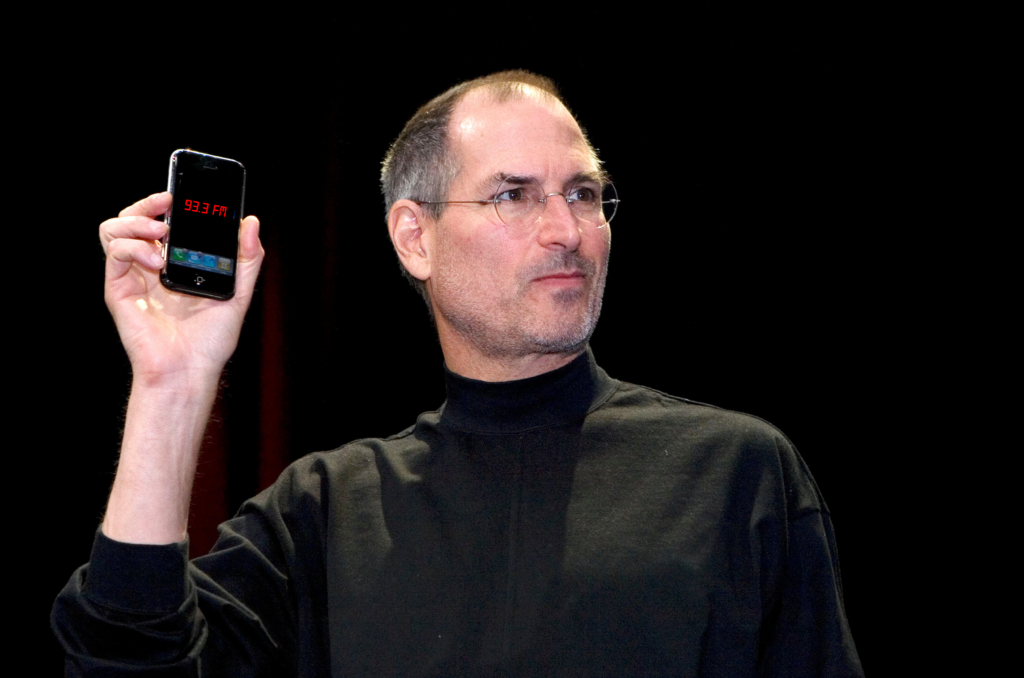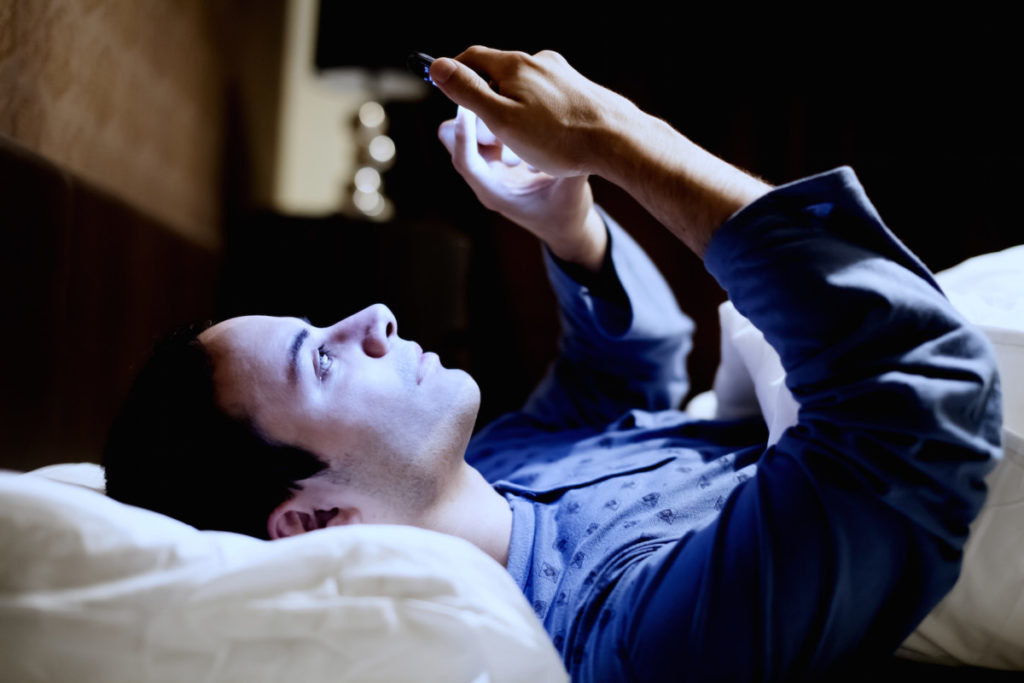
NextRadio may be no more, but that doesn’t stop the incessant online chatter about “What if…”
So what if all those millions of smartphones with FM chips were activated? How would that change the fate of the broadcast radio business?
Consumers are more addicted to their phones than ever. We’ve tracked it each year in Techsurvey, and now new research from Common Sense reveals what we’ve known all along:
Most of us sleep with our smartphones. In fact, parents are now more likely to have their iPhones on their pillows even more than their teen kids. Nearly three-fourths of the parents in Common Sense’s 1,000 person sample report being addicted to their mobile phones, going to sleep with their cellular devices. And more than one-fourth wake up during the night to check them.

So, imagine if there were a built-in radio in all these smartphones – that didn’t use any data. Wouldn’t that be the game-changer radio broadcasters have been looking for?
Oddly enough, this summer marks the 40th anniversary of the Sony Walkman. If the standard car radio embedded in every dashboard since the 1920s was the ultimate gift to broadcasters from automakers, Sony’s portable radio/cassette player was a close second. Seemingly everyone owned a Walkman back in the ’80s and ’90s, allowing for a smooth transition from transistor radios to a cool new gadget that people loved to carry around listening to the radio wherever they went.
When Sony finally phased them out and Apple stepped in with their iPod, it was a bad day for radio broadcasters. Suddenly, radio lost its portability, and with it, millions of quarter-hours and perhaps an entire generation or two of habitual listeners.
So, if I waved the wand and presto chango, every smartphone had an activated FM chip, what would be the net effect for the radio industry?
Radio ratings might improve. All of a sudden, many more people would ostensibly listen to favorite FM stations and personalities on their smartphones. Of course, most of them would be using earbuds, air pods, or headphones to listen, thus making it difficult for Nielsen’s PPM methodology to fully measure all this new listening. Still, more is more.
And radio sellers would be happy…or maybe a little happier. After all, it’s easier for them to monetize their terrestrial listening than squeezing dollars from their digital streams. A turned-on FM chip would no doubt be accretive to radio’s broadcast ratings. But perhaps that would also set back broadcasters’ digital initiatives and efforts. The lower hanging fruit of over the air listening would consume radio reps’ time and energy, putting them farther back in the digital media race.
The real difference that activated FM chips in all those iOS and Android handsets would make is that broadcast radio would finally be on an equal playing field with Spotify, podcasts, and other digital music and talk offerings when it comes to mobile access. FM radio on millions and millions of smartphones would be a boost for broadcasters.
Or would it?
While most radio stations are competitive with other radio stations, how do they stack up to digital media content standards? Pick any radio market in the country, and you’ll hear most stations playing commercials at the same time, running virtually the same national contests, and playing dozens of commercials each hour – not exactly the best user experience up against all those digital options.
And then there are these questions:
Does radio offer personalization and customization?
What about radio’s ability to easily time-shift programming so listeners can access it any time they like?
How is radio’s social engagement?
And how well does the medium serve its biggest and best fans?
I’ll let you provide the answers to these questions. But it’s clear to me that in a world where everything is available on mobile devices – even radio – broadcasters might not have the pole position, despite the presence of an operational FM chip.
 We’re seeing this phenomenon play out in digital dashboards, where radio lives right alongside satellite radio, podcasts, and streaming music and spoken word channels. When radio stations match up with other radio stations, the battleground is a familiar and comfortable one. But we know drivers move from FM to satellite to podcasts to content available on their mobile phones. How is that comparative experience, and how does radio fare up against virtually everything?
We’re seeing this phenomenon play out in digital dashboards, where radio lives right alongside satellite radio, podcasts, and streaming music and spoken word channels. When radio stations match up with other radio stations, the battleground is a familiar and comfortable one. But we know drivers move from FM to satellite to podcasts to content available on their mobile phones. How is that comparative experience, and how does radio fare up against virtually everything?
It starts with seeing the broader competitive landscape, something that broadcast radio has struggled to get its collective head around. And an understanding that it’s not just a diary or meter game, but an all-out battle for the audience’s time and attention.
So, an FM chip for smartphones would be a great thing, right?
Be careful what you wish for.
- Simply Unpredictable - April 10, 2025
- Flush ‘Em Or Fix ‘Em?What Should Radio Do About Its Aging Brands? - April 9, 2025
- Radio: It’s Time To Stop Playing Small Ball - April 8, 2025




Smart-phone radio CHIP ON has always been needed, creating more receivers for any circumstance. I’d match great programmers & personalities against “AlgoRhythm playlistlists” any day. “Turn Your Radio On!”
Clark, game ON!
Fred,
Being an Apple guy, the only thing that made the droids worth looking at was the chip. Another issue impeding this now is Bluetooth. The FM chip in most phones relied on the headphone cord to serve as an antenna. Wireless speakers, air pods and other wireless headsets are becoming the norm. I doubt whether many manufacturers would commit to some sort of internal antenna system. If not consumers would not go to the trouble to make it work.
Agree and agree. Just trying to get that conversation going with the hypothetical question, but practically speaking, you’re probably right.
I’ve always felt that “radio” should be available EVERYWHERE. First it was AM. Then AM/FM…internet…websites…streaming…..etc. If I watch video, listen to music, check e-mail and everything else we do on the “phone” why do I need to have a traditional radio receiver to listen to my favorite station? Why does radio need its own playing field when everyone else is at a different ball park? …Let the chips fall where they may (pun intended)
So to speak! Thanks for chiming in, John.
I recently picked up a Motorola Moto G6 and discovered it had the FM chip enabled. I was really impressed with how they implemented the feature, especially how it displays the station information (with RDS if available), which makes searching for stations and tuning into them simple and easy.
I’d say the main drawback (which has already been mentioned) is how the technology in general is moving. The FM chip needs to use wired headphones as the antenna; I recently picked up a pair of Anker bluetooth headphones and can’t imagine going back to the old wired ones. But the FM feature won’t work with wireless headphones which is a huge bummer; if it did I’d listen to it all the time.
Alas my normal phone is an iPhone SE and it appears Apple has absolutely zero interest in ever implementing this, so unless something major happens mass adoption (at least here in the US) seems DOA.
Ryan, yes, wireless headphones are yet another issue (among many). That’s why I made today’s post hypothetical. 🙂
Apple may not be activating the chips, but it is making it easier to listen to the radio… https://www.allaccess.com/net-news/archive/story/186874/wwdc-news-apple-adds-siri-access-to-100k-radio-str
True, but via streams – like the Amazon Echo. Broadcasters would love a terrestrial solution, which would also mean no data charges for consumers.